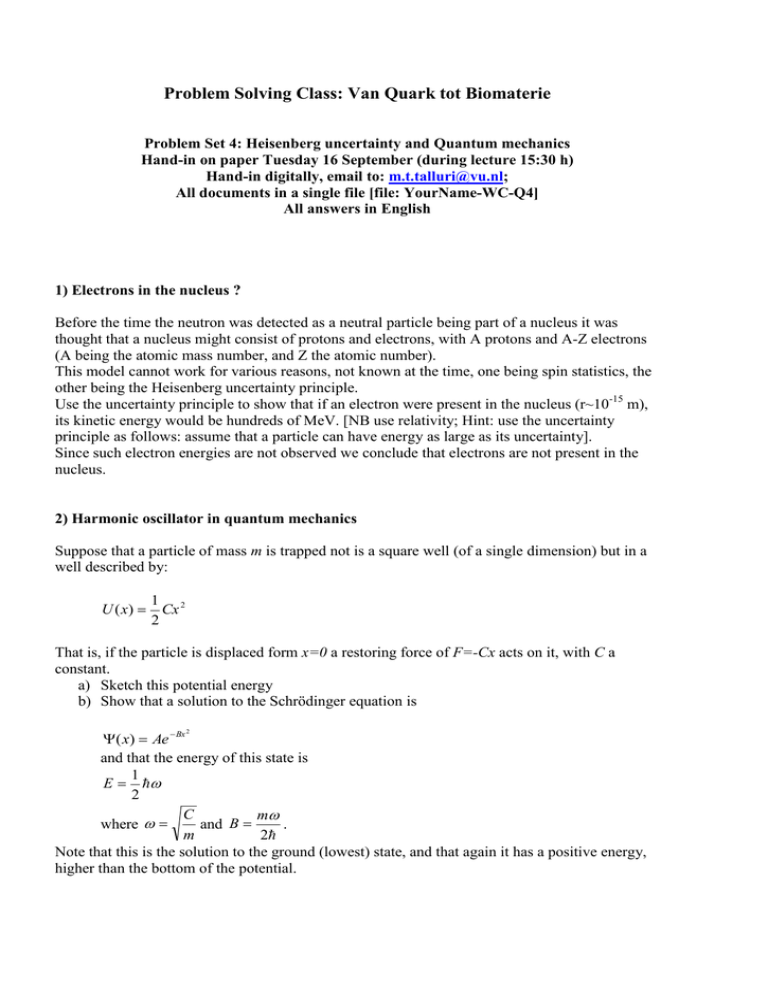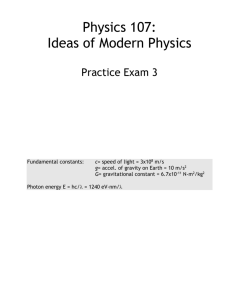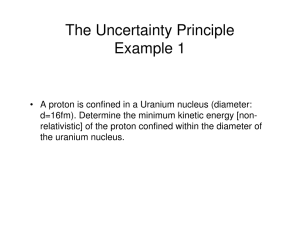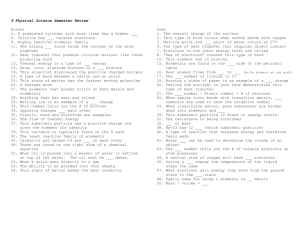Problem Solving Class: Van Quark tot Biomaterie
advertisement

Problem Solving Class: Van Quark tot Biomaterie Problem Set 4: Heisenberg uncertainty and Quantum mechanics Hand-in on paper Tuesday 16 September (during lecture 15:30 h) Hand-in digitally, email to: m.t.talluri@vu.nl; All documents in a single file [file: YourName-WC-Q4] All answers in English 1) Electrons in the nucleus ? Before the time the neutron was detected as a neutral particle being part of a nucleus it was thought that a nucleus might consist of protons and electrons, with A protons and A-Z electrons (A being the atomic mass number, and Z the atomic number). This model cannot work for various reasons, not known at the time, one being spin statistics, the other being the Heisenberg uncertainty principle. Use the uncertainty principle to show that if an electron were present in the nucleus (r~10-15 m), its kinetic energy would be hundreds of MeV. [NB use relativity; Hint: use the uncertainty principle as follows: assume that a particle can have energy as large as its uncertainty]. Since such electron energies are not observed we conclude that electrons are not present in the nucleus. 2) Harmonic oscillator in quantum mechanics Suppose that a particle of mass m is trapped not is a square well (of a single dimension) but in a well described by: U ( x) 1 2 Cx 2 That is, if the particle is displaced form x=0 a restoring force of F=-Cx acts on it, with C a constant. a) Sketch this potential energy b) Show that a solution to the Schrödinger equation is ( x) Ae Bx and that the energy of this state is 1 E 2 C m where and B . m 2 Note that this is the solution to the ground (lowest) state, and that again it has a positive energy, higher than the bottom of the potential. 2






